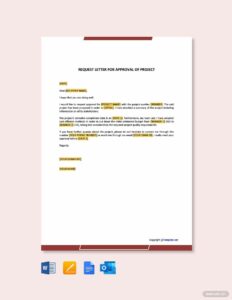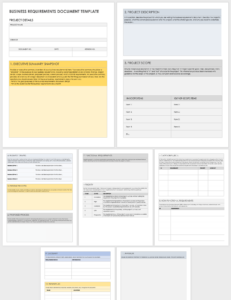A well-crafted project management business requirements document (BRD) serves as a valuable roadmap, guiding project teams throughout the project lifecycle. It ensures alignment between stakeholders, streamlines communication, and reduces the risk of project failures.
What is a project management BRD?
A project management BRD is a comprehensive document that outlines the project’s business objectives, scope, timeline, budget, and dependencies. It defines the specific requirements that the project must meet to achieve its intended outcomes. The BRD serves as a baseline for measuring project progress and ensuring that the project delivers value to the organization.
Developing a robust BRD requires thorough stakeholder engagement. Project managers should conduct interviews, surveys, and workshops to gather requirements from key stakeholders. This collaborative approach ensures that all perspectives are captured and that the BRD reflects the true needs of the project.
Components of an Effective Project Management BRD
An effective project management BRD typically includes the following components:
- Introduction: Provides an overview of the project, its purpose, and its intended outcomes.
- Background: Describes the context and history of the project, including any relevant background information.
- Business Objectives: Clearly defines the project’s business goals and objectives, ensuring that it aligns with the organization’s strategic objectives.
- Scope: Outlines the boundaries of the project, including the specific deliverables, activities, and resources required to complete the project.
- Timeline: Specifies the project’s duration, including milestones and key deadlines.
- Budget: Provides a detailed estimate of the project’s costs, including labor, materials, and equipment.
- Dependencies: Identifies any external factors or resources that the project relies on, such as other projects or third-party vendors.
- Assumptions and Constraints: Lists any assumptions made during the requirements gathering process and any constraints that may impact the project.
- Glossary: Defines any technical terms or jargon used in the BRD to ensure clarity and understanding among stakeholders.
Benefits of Using a Project Management BRD
Adopting a project management BRD offers numerous benefits throughout the project lifecycle:
- Clear Communication: Establishes a common understanding of project requirements, reducing misunderstandings and enhancing collaboration among stakeholders.
- Improved Decision-Making: Provides a solid foundation for informed decision-making, ensuring that project decisions are based on objective data and stakeholder feedback.
- Risk Mitigation: Identifies potential risks and outlines mitigation strategies, reducing the likelihood of project failures.
- Enhanced Project Control: Serves as a benchmark for tracking project progress and monitoring project performance, enabling proactive adjustments as needed.
- Increased Stakeholder Buy-In: Engaging stakeholders in the BRD process fosters a sense of ownership and increases their commitment to the project’s success.
Conclusion
A well-structured project management business requirements document (BRD) is indispensable for successful project execution. It defines the project’s purpose, scope, timeline, budget, and dependencies, ensuring that all stakeholders are on the same page. The collaborative development process, thorough stakeholder engagement, and comprehensive documentation provided by a BRD facilitate clear communication, enhanced decision-making, and improved project control.
By embracing a project management BRD, organizations can increase the likelihood of project success, deliver value to the business, and foster stakeholder satisfaction.


